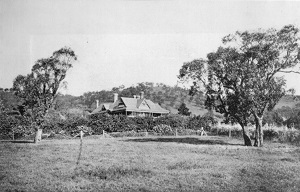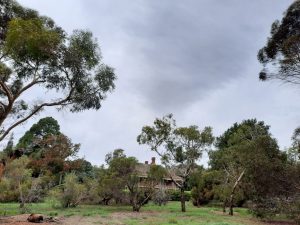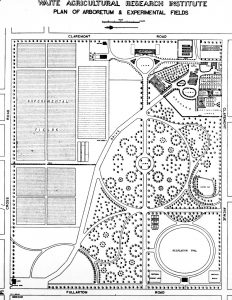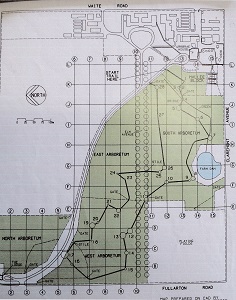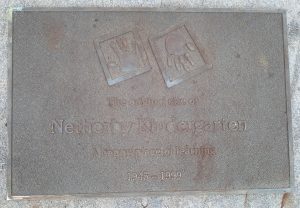Waite Arboretum History
PETER WAITE, The WAITE ARBORTEUM'S CARETAKERS: DIRECTORS – CURATORS – SYSTEMATIC BOTANIST.
Peter Waite's Bequest
In 1914 Peter Waite bequested the Urrbrae estate to the University of Adelaide subject to a life tenancy for himself and his wife Matilda The land of 53 hectares was being used as agricultural and grazing land. The terms of the gift was that eastern half of the estate was to be used for purposes of research and teaching in the fields of agriculture, botany, entomology, horticulture and forestry. The remaining 27 hectares was to be a public park under the control of the University. The 27 hectares became to be the Waite Arboretum (Gardner, 1990, p.1).
Prior to European settlement in Adelaide in 1836 the land was open Savannah woodland. In 2020 the northwest section of the Arboretum contains original trees, Eucalyptus microcarpa Peppermint Box, Eucalyptus camaldulensis River Red Gum, and Eucalyptus leucoxylon Blue Gum.
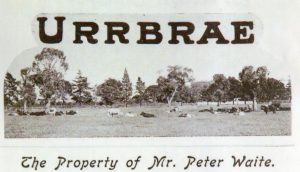
URRBRAE 1908, SOURCE: Our Pastoral Industry, 1908, (Boyle, E. 2019)
The Mallee area before plantings in the 1950s, SOURCE: …?????. The Mallee, April 2020
Waite Arboretum's Directors – Curators – Systematic Botanist
1928 – 1937 – Director Richardson: The opening of the Arboretum in 1928 was under Professor Arnold Edwin Victor Richardson (1883 – 1949) who was Professor of Agriculture and Director of the Waite Agricultural Research Institute at the University of Adelaide (1924 – 1937). Richardson supervised the first planning and establishment of the Arboretum.
1938 – 1955 – Director Prescott: Professor James Arthur Prescott (1890-1987) was the second Director of the institue (1938-1955). "He took a keen interest in the Arboretum and kept a firm hand on planting" (Gardner, 1990, p.2).
1933 – 1949: Waite Arboretum Curator, Constance Eardley (1910-1978), Director "Richardson appointed Constance M. Eardley as the first taxonomic botanist at the Waite Institute with the position of curator of the Waite Herbarium and Waite Arboretum (1933 – 49)" (Gardner, 1915, p.7). EARDLEY Constance M
1947 – 1953: Waite Arboretum Curator, Enid Roberston. "Enid L. Roberston joined the staff of the Institute as Systematic Botanist in 1947 and succeeded Eardley as Curator of the Waite Arboretum (1950-3" (Gardner, 2015, p.7)
1953 – 55: Waite Arboretum, Systematic Botanist, Frank M. Hilton (Gardner, 2015, p.7) "… Went to the S.A. Department of Education as Senior Master in Agriculture" (Edgeloe, 1984, p.176).
1956 – 1985: Waite Arboretum Curator, Dr David Symon. "As curator of the Waite Arboretum, he made the decision not to water the trees after establishment to see which species performed well on rainfall alone. The long experience has contributed to the selection of trees for Adelaide Streets, parks and gardens. …" (University of Adelaide 2012).
1986 – 2017: Waite Arboretum Curator, Dr Jennifer Gardner. The third phrase in the development of the Arboretum began under Dr Jennifer Gardner in 1986 (Gardner and Symon, 2004). Dr Gardner Curatorship included "the development of the Arboretum as a working collection with a strong program of community engagement" (Gardner, 2015, p.9). GARDNER Dr Jennifer G and Douglas
2017 – 2047 – ….: Waite Arboretum Curator, Dr Kate Delaporte.
"Kate is the Curator of the Waite Arboretum and Waite Conserveration Reserve, a position that enables her to implement her knowledge of trees and Australian native plants, her skills in working with volunteers and community groups, and grow her various research interests. Kate's main interest is improving Australian native plants for horticulture by research into propgation, cultivation, and breeding and selecting new varieties and species. She also has interests in supporting indigenous knowledge of food/medicines from plants; renewing the Urban Forest, sustainable agriculture and the environment; amentity horticulture (nursery, cut flower, garden design), general horticulture (in particular small fruits and new crops such as essential oils, herbs, spices and Asian vegetables); re-forestation and plant genome conservation.
Kate has added interests in promoting and enhacing opportunities for women in the workplace, particularly in Science (Agriculture and Horticulture), and promoting STEM at all school levels" (Source: University of Adelaide website, accessed 17 April 2020). https://researchers.adelaide.edu.au/profilekate.delaporte
Kate as the Principal Researcher led a Ornamental Eucalypt Development Program at the Waite that established in-grounds trials of 20 new hybrid lines, some of which have been planted in the Waite Arboretum. Two of the hybrid lines are named Eucalyptus cultivars are commercially available – 'Nullarbor Rose and Nullarbor Lime' (Gardner, 2015, p.13)
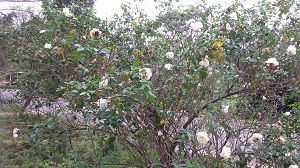
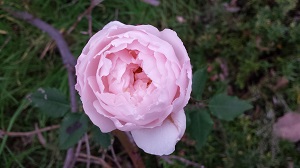
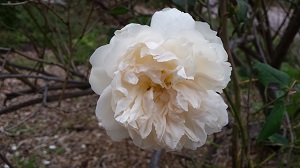
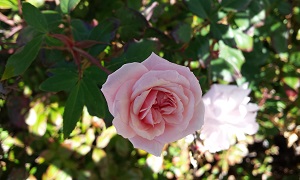
The rose bush from Peter Waite's days continue to flower.
Left: Waite Agricultural Research Institute, Plan of Arboretum and Experiemental Fields, circa: 1933 or 1938? Source: University of Adelaide Waite Campus
Right: Waite Arboretum Walking Trail 2005, Map prepared by on CAD by Woodhead Australia Architects 2005. self-guided_walking_trail_notes_25_11_05 Waite A 30 Jan 2014


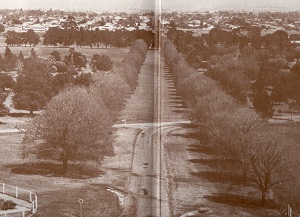
Left: Urrbrae Estate 1919 "Aerial view (looking east) of Urrbrae estate taken by Frank Hurley in December 1919. Urrbrae House, surrounded by gardens and orchards is located on the right side of the photo. The original tree-lined drive still used today can be seen sweeping towards the house from the bottom left corner." Source: The University of Adelaide, Urrbrae House in Zeitz, 2014, p.8). Centre: The Waite Arboretum Research Institute 1976 Research Fields, Laboratories, Arboretum. Source Edgelow, 1984, p.90. Right: Pre 1974, Waite campus / Arboretum's Elm Avenue looking west. The Ulmus x hollandica, Dutch Elms were planted in 1928. Source: Edgeloe, 1984, inside cover. PLEASE NOTE: In 2019 there was change in the identification of Elm Avenues' Ulmus procera English Elms to Ulmus x hollansica Dutch Elms.
Netherby Kindergarten Arboretum sign: "The original site of Netherby Kindergarten A happy place of learning 1945 – 1999", Arboretum's south west corner in Claremont Avenue.
The Netherby Kindergarden articles can be read in a number of FWA's newsletters:
Newsletter #20 Winter 1999 Newsletter #21 Spring 1999 Newsletter #22 Summer 2000 Newsletter #23 Autumn 2000
